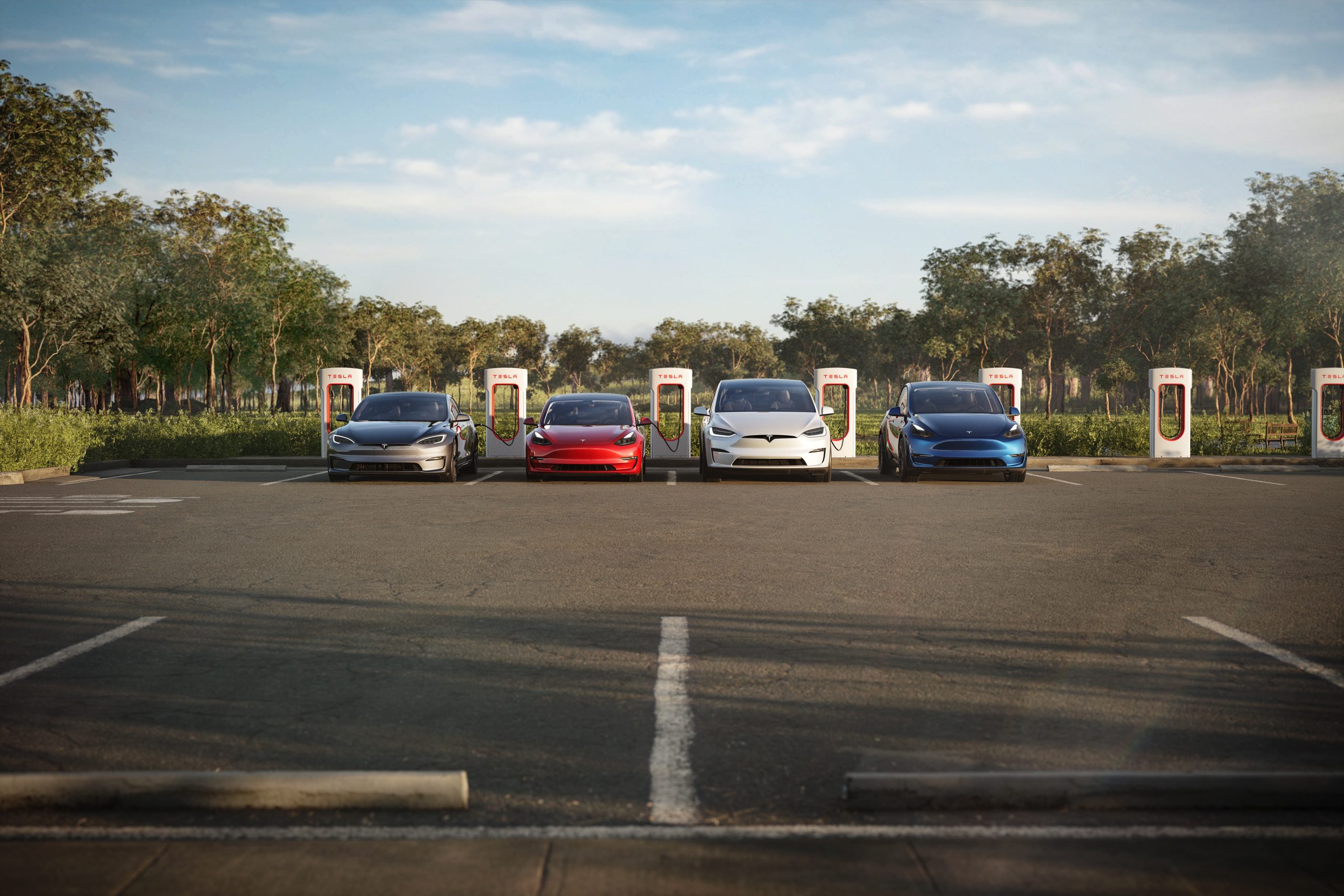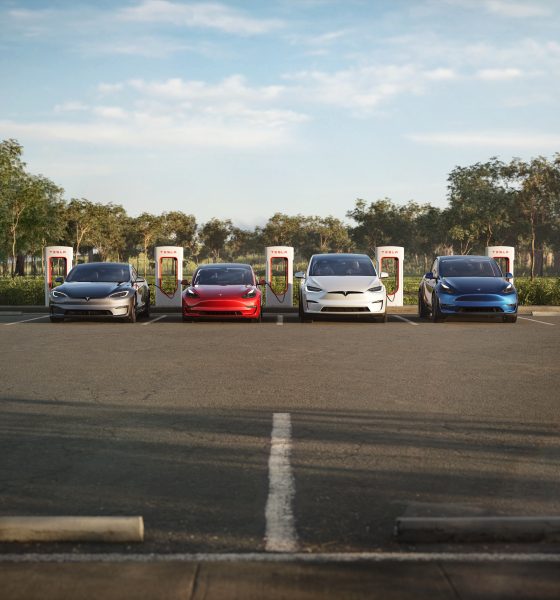Three Tesla owners have sued the automaker in a class action lawsuit that was filed on August 2, 2023, after a report from Reuters last week claims the company “exaggerates” its range ratings.
Teslarati examined the complaint, and we are here to give you a breakdown of what the suit says and what the three plaintiffs are suing Tesla for.
The Plaintiffs
Tesla is being sued by James Porter, Bryan Perez, and Dro Esraeili Estepanian, who state in their complaint against the automaker that their action “arises out of Tesla’s false advertising of its electric vehicles’ range, which Tesla grossly overvalued when selling the vehicles to consumers.”
According to the complaint, Porter owns a Model Y Performance and noticed a discrepancy in his vehicle’s range was compared to what it told him:
“After taking delivery of his Tesla vehicle in June 2022, Plaintiff Porter fully charged his vehicle to 100% battery charge and took a 2-hour trip to visit family, approximately 92 miles away. When he arrived at his destination, Plaintiff Porter noticed that the vehicle was left with approximately 40% charge.”
Perez owns a Model 3 Long Range, and the complaint states he had the same issue:
“After receiving his Tesla vehicle, Plaintiff Perez fully charged his vehicle to 100% battery charge and took an approximately 90-mile trip to visit his parents. After returning home from the approximately 180-mile round trip, he noticed that his vehicle showed that it had roughly 10-15% charge remaining.”
Estepanian also has a Model 3 Long Range, and the complaint describes a similar situation:
“Plaintiff Estepanian travels 140 to 150 miles round trip for his daily commute, and he routinely charges his vehicle to 90% battery charge (which equates to approximately 299 miles), per Tesla’s recommendation. Based on a 90% battery charge (and 299-mile starting range), he typically returns from his approximately 150-mile round trip each day and his Tesla vehicle’s screen displays that approximately 100 to 110 miles of range remain, which equates to roughly 33% battery charge remaining. Thus, Plaintiff Estepanian’s electric vehicle consistently loses approximately 189 miles of range during his daily commute—despite only driving approximately 140 to 150 miles round trip each day.”
The Plaintiffs’ Claims
The plaintiffs state that range is a key feature of electric vehicles and is “one of the most important features that consumers generally consider when purchasing an EV, because it correlates to the distance they can travel before needing to recharge the vehicle.”
Throughout the suit, the complaint shows images of Tesla’s website, highlighting range ratings and other “key features,” including top speed and acceleration.
They also include other pieces of evidence that seem to indicate Tesla has exaggerated range estimates.
One part of the complaint states:
“Tesla’s tactics to inflate the range estimates for its vehicles has continued. Recently, South Korean regulators fined Tesla for false advertising the ranges of its vehicles. Specifically, the Korea Fair Trade Commission found that Tesla exaggerated the “driving ranges of its cars on a single charge, their fuel cost-effectiveness compared to gasoline vehicles as well as the performance of its Superchargers.”
They also stated that other car companies to do not exaggerate range ratings, citing Recurrent’s testing of the Ford Mustang Mach-E, Chevrolet Bolt, and Hyundai Kona:
“Other electric vehicle manufacturers do not overestimate the range of their vehicles to the same extent. For example, Recurrent tested the Ford Mustang Mach-E, the Chevrolet Bolt, and the Hyundai Kona—all electric vehicles and direct competitors to Tesla model vehicles—and found their estimated ranges to be more accurate. In fact, the Hyundai Kona generally underestimated the range the vehicle could travel before requiring a recharge.”
Allegations in the Class Action Suit
The plaintiffs seek to represent anyone in California who purchased any Tesla vehicle and hope to solve questions including:
- a. Whether Tesla model vehicles fail to deliver the advertised estimated vehicle range in normal driving conditions;
- b. Whether Tesla exaggerated its advertised estimated vehicle ranges;
- c. Whether Tesla knew that its advertised estimated vehicle ranges were exaggerated and could not be met under normal driving conditions;
- d. When Tesla gained such knowledge;
- e. Whether Tesla designed, manufacture, marketed, advertised, sold, or otherwise placed its model vehicles into the stream of commerce with such knowledge;
- f. Whether Tesla intentionally concealed the fact that its advertised estimated vehicle ranges were exaggerated or otherwise could not be met under normal driving conditions;
- g. Whether Tesla’s conduct to divert complaints from Class Members who voiced concerns over their Tesla model vehicle’s range violated the terms of Tesla’s warranties;
- h. Whether Plaintiffs and Class Members were harmed by the fraud and deceptive practices alleged herein;
- i. Whether Tesla was unjustly enriched by its deceptive practices; and
- j. Whether Plaintiffs and the Class are entitled to equitable or injunctive relief
The case is 3:2023cv03878, Porter et al v. Tesla, Inc., and has been assigned to Judge Laurel Beeler.
I’d love to hear from you! If you have any comments, concerns, or questions, please email me at joey@teslarati.com. You can also reach me on Twitter @KlenderJoey, or if you have news tips, you can email us at tips@teslarati.com.

News
Tesla starts showing how FSD will change lives in Europe
Local officials tested the system on narrow country roads and were impressed by FSD’s smooth, human-like driving, with some calling the service a game-changer for everyday life in areas that are far from urban centers.

Tesla has launched Europe’s first public shuttle service using Full Self-Driving (Supervised) in the rural Eifelkreis Bitburg-Prüm region of Germany, demonstrating how the technology can restore independence and mobility for people who struggle with limited transport options.
Local officials tested the system on narrow country roads and were impressed by FSD’s smooth, human-like driving, with some calling the service a game-changer for everyday life in areas that are far from urban centers.
Officials see real impact on rural residents
Arzfeld Mayor Johannes Kuhl and District Administrator Andreas Kruppert personally tested the Tesla shuttle service. This allowed them to see just how well FSD navigated winding lanes and rural roads confidently. Kruppert said, “Autonomous driving sounds like science fiction to many, but we simply see here that it works totally well in rural regions too.” Kuhl, for his part, also noted that FSD “feels like a very experienced driver.”
The pilot complements the area’s “Citizen Bus” program, which provides on-demand rides for elderly residents who can no longer drive themselves. Tesla Europe shared a video of a demonstration of the service, highlighting how FSD gives people their freedom back, even in places where public transport is not as prevalent.
What the Ministry for Economic Affairs and Transport says
Rhineland-Palatinate’s Minister Daniela Schmitt supported the project, praising the collaboration that made this “first of its kind in Europe” possible. As per the ministry, the rural rollout for the service shows FSD’s potential beyond major cities, and it delivers tangible benefits like grocery runs, doctor visits, and social connections for isolated residents.
“Reliable and flexible mobility is especially vital in rural areas. With the launch of a shuttle service using self-driving vehicles (FSD supervised) by Tesla in the Eifelkreis Bitburg-Prüm, an innovative pilot project is now getting underway that complements local community bus services. It is the first project of its kind in Europe.
“The result is a real gain for rural mobility: greater accessibility, more flexibility and tangible benefits for everyday life. A strong signal for innovation, cooperation and future-oriented mobility beyond urban centers,” the ministry wrote in a LinkedIn post.
News
Tesla China quietly posts Robotaxi-related job listing
Tesla China is currently seeking a Low Voltage Electrical Engineer to work on circuit board design for the company’s autonomous vehicles.

Tesla has posted a new job listing in Shanghai explicitly tied to its Robotaxi program, fueling speculation that the company is preparing to launch its dedicated autonomous ride-hailing service in China.
As noted in the listing, Tesla China is currently seeking a Low Voltage Electrical Engineer to work on circuit board design for the company’s autonomous vehicles.
Robotaxi-specific role
The listing, which was shared on social media platform X by industry watcher @tslaming, suggested that Tesla China is looking to fill the role urgently. The job listing itself specifically mentions that the person hired for the role will be working on the Low Voltage Hardware team, which would design the circuit boards that would serve as the nervous system of the Robotaxi.
Key tasks for the role, as indicated in the job listing, include collaboration with PCB layout, firmware, mechanical, program management, and validation teams, among other responsibilities. The role is based in Shanghai.
China Robotaxi launch
China represents a massive potential market for robotaxis, with its dense urban centers and supportive policies in select cities. Tesla has limited permission to roll out FSD in the country, though despite this, its vehicles have been hailed as among the best in the market when it comes to autonomous features. So far, at least, it appears that China supports Tesla’s FSD and Robotaxi rollout.
This was hinted at in November, when Tesla brought the Cybercab to the 8th China International Import Expo (CIIE) in Shanghai, marking the first time that the autonomous two-seater was brought to the Asia-Pacific region. The vehicle, despite not having a release date in China, received a significant amount of interest among the event’s attendees.
Elon Musk
Elon Musk and Tesla AI Director share insights after empty driver seat Robotaxi rides
The executives’ unoccupied tests hint at the rapid progress of Tesla’s unsupervised Robotaxi efforts.

Tesla CEO Elon Musk and AI Director Ashok Elluswamy celebrated Christmas Eve by sharing personal experiences with Robotaxi vehicles that had no safety monitor or occupant in the driver’s seat. Musk described the system’s “perfect driving” around Austin, while Elluswamy posted video from the back seat, calling it “an amazing experience.”
The executives’ unoccupied tests hint at the rapid progress of Tesla’s unsupervised Robotaxi efforts.
Elon and Ashok’s firsthand Robotaxi insights
Prior to Musk and the Tesla AI Director’s posts, sightings of unmanned Teslas navigating public roads were widely shared on social media. One such vehicle was spotted in Austin, Texas, which Elon Musk acknowleged by stating that “Testing is underway with no occupants in the car.”
Based on his Christmas Eve post, Musk seemed to have tested an unmanned Tesla himself. “A Tesla with no safety monitor in the car and me sitting in the passenger seat took me all around Austin on Sunday with perfect driving,” Musk wrote in his post.
Elluswamy responded with a 2-minute video showing himself in the rear of an unmanned Tesla. The video featured the vehicle’s empty front seats, as well as its smooth handling through real-world traffic. He captioned his video with the words, “It’s an amazing experience!”
Towards Unsupervised operations
During an xAI Hackathon earlier this month, Elon Musk mentioned that Tesla owed be removing Safety Monitors from its Robotaxis in Austin in just three weeks. “Unsupervised is pretty much solved at this point. So there will be Tesla Robotaxis operating in Austin with no one in them. Not even anyone in the passenger seat in about three weeks,” he said. Musk echoed similar estimates at the 2025 Annual Shareholder Meeting and the Q3 2025 earnings call.
Considering the insights that were posted Musk and Elluswamy, it does appear that Tesla is working hard towards operating its Robotaxis with no safety monitors. This is quite impressive considering that the service was launched just earlier this year.










